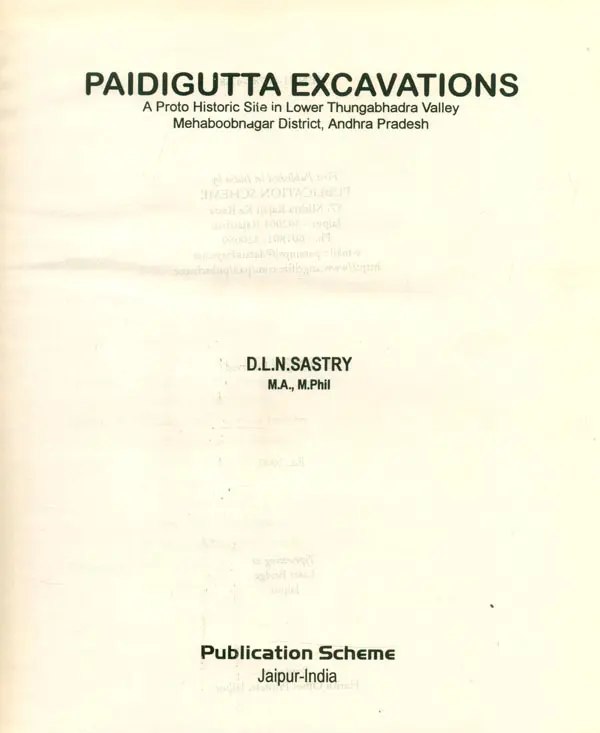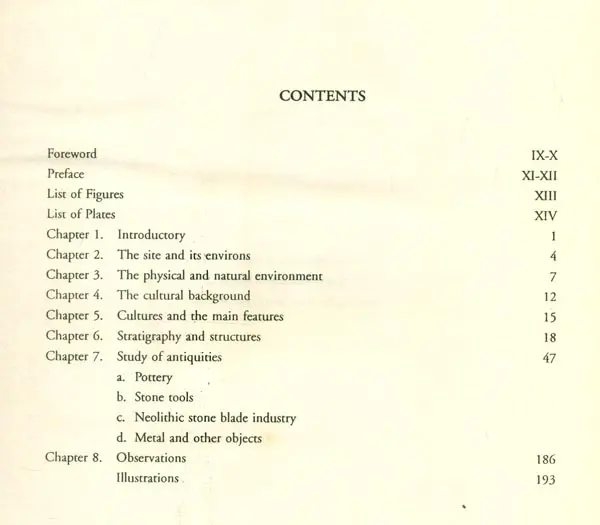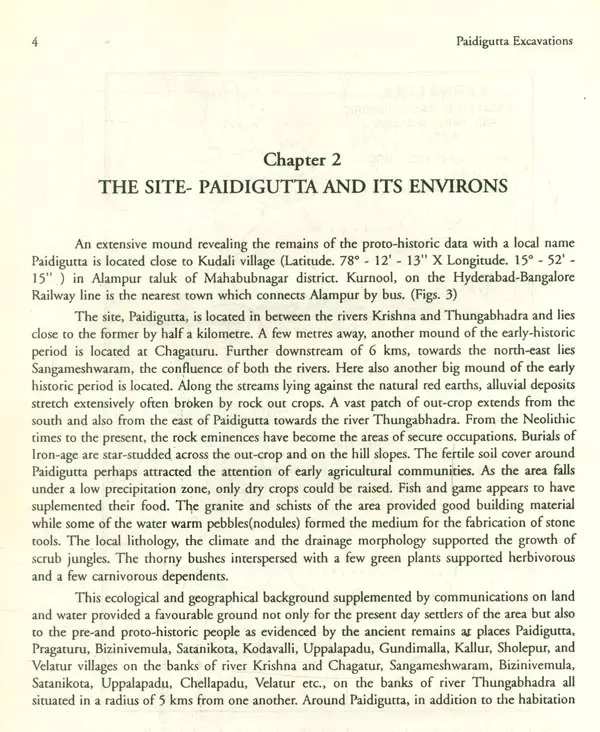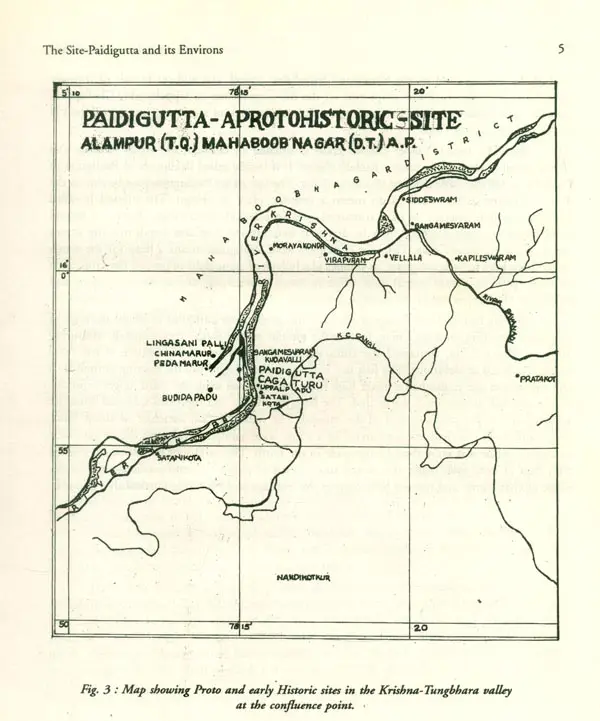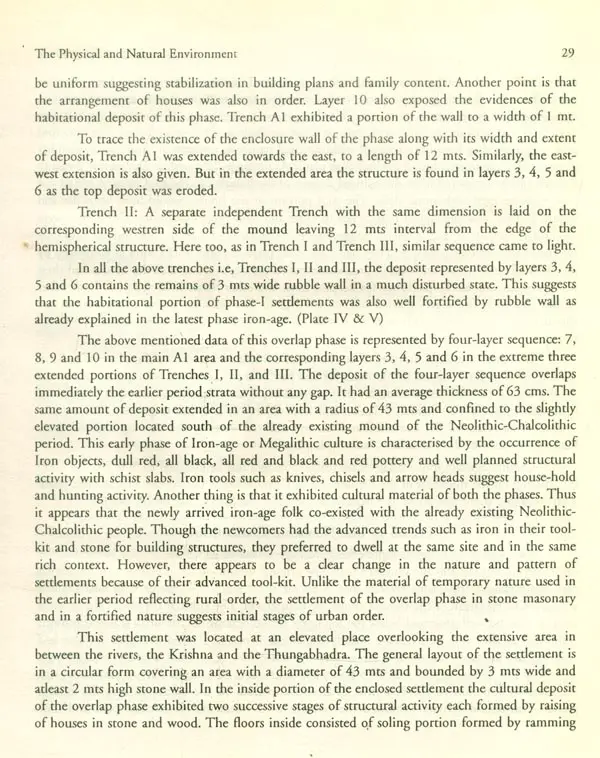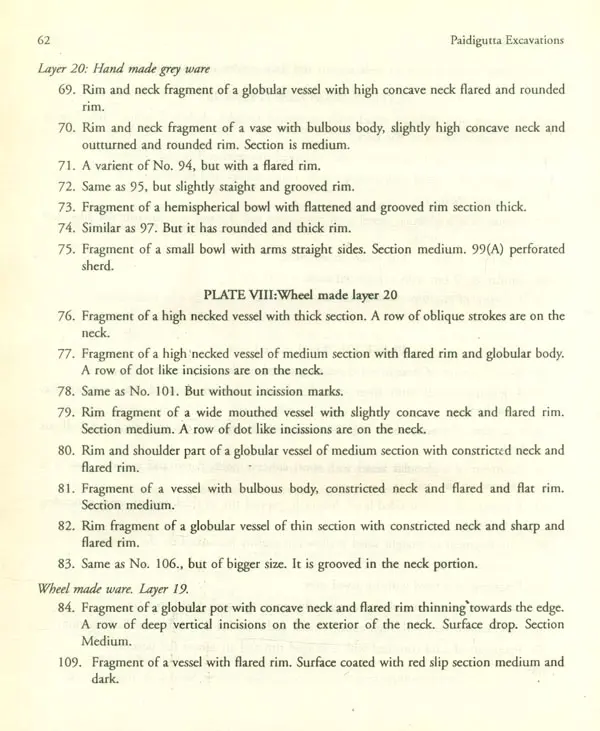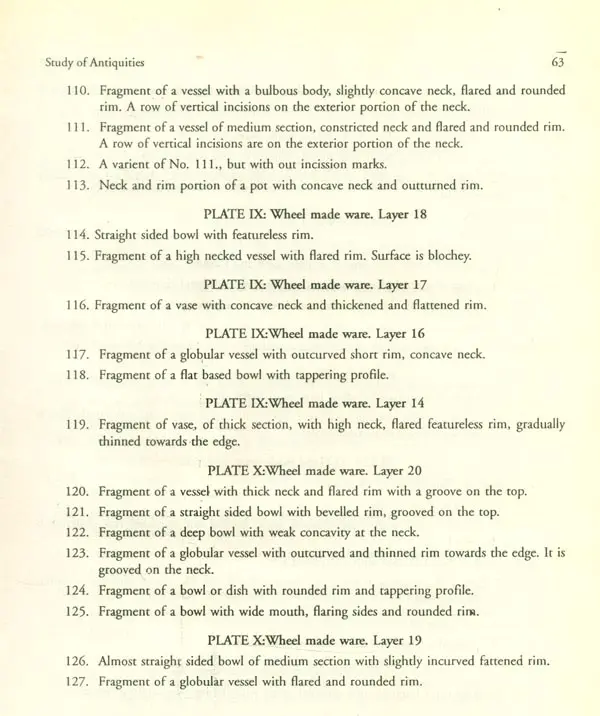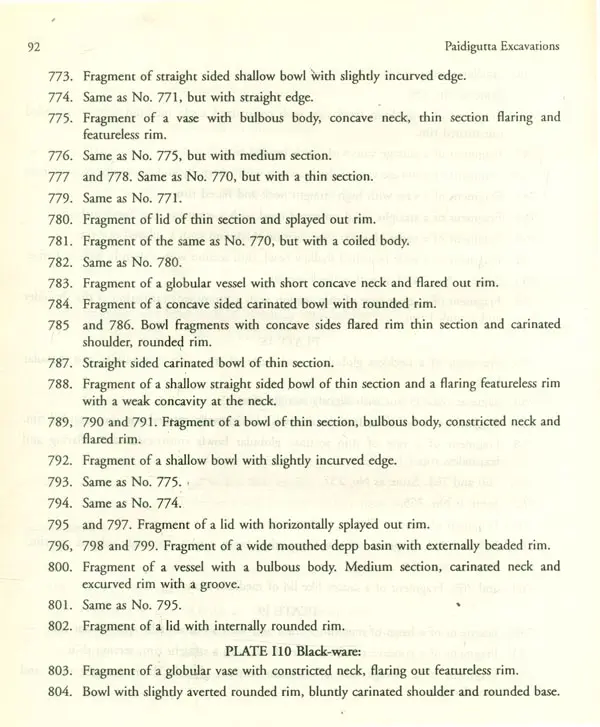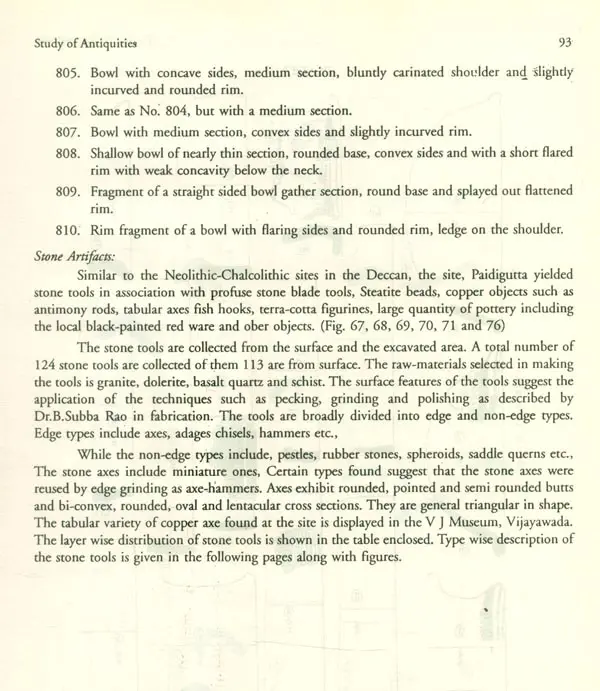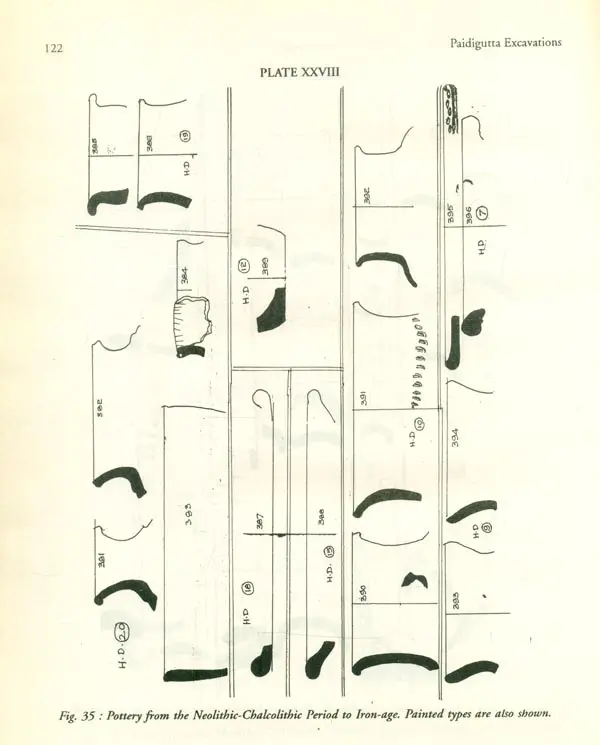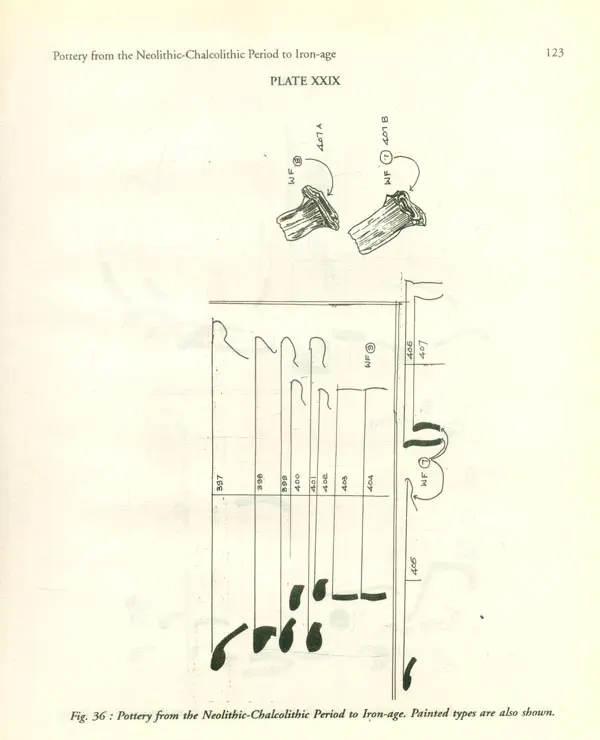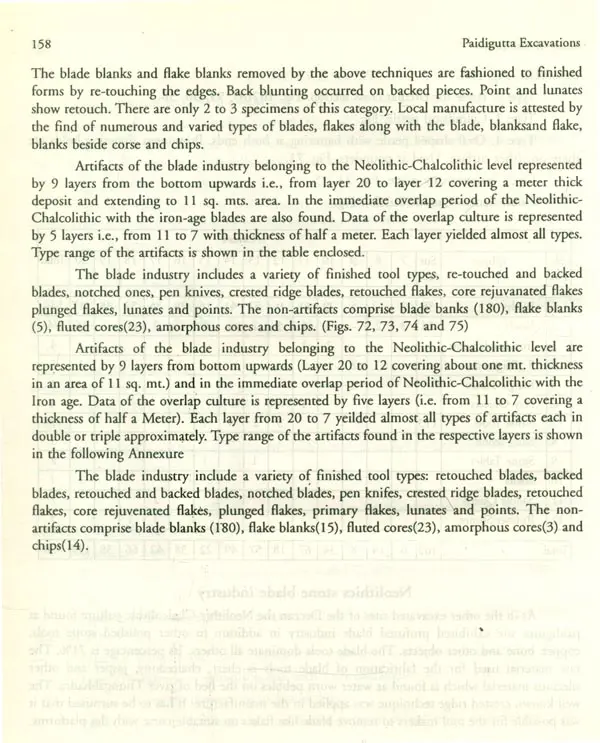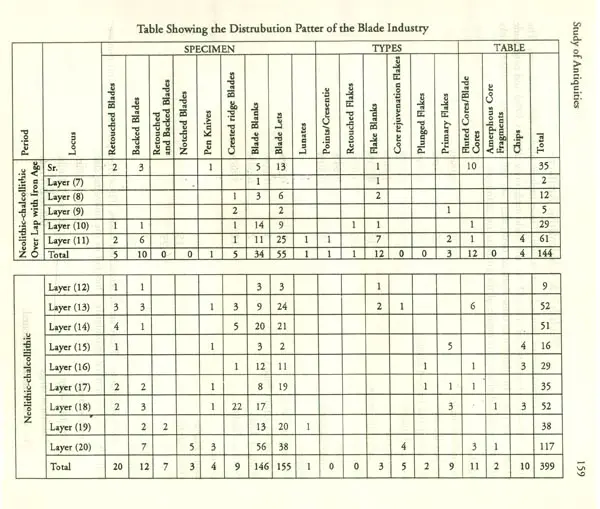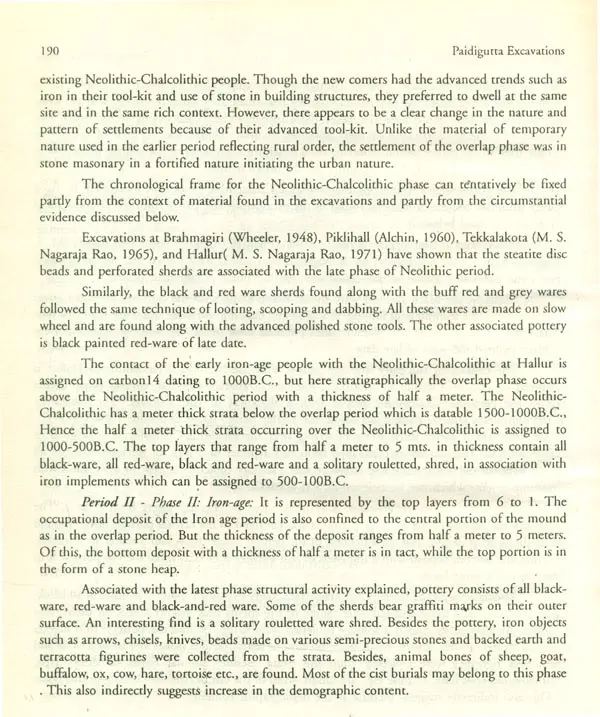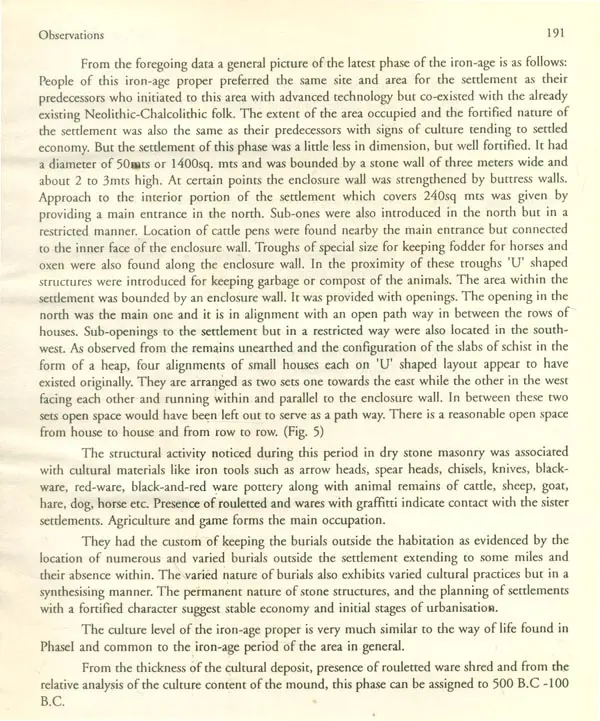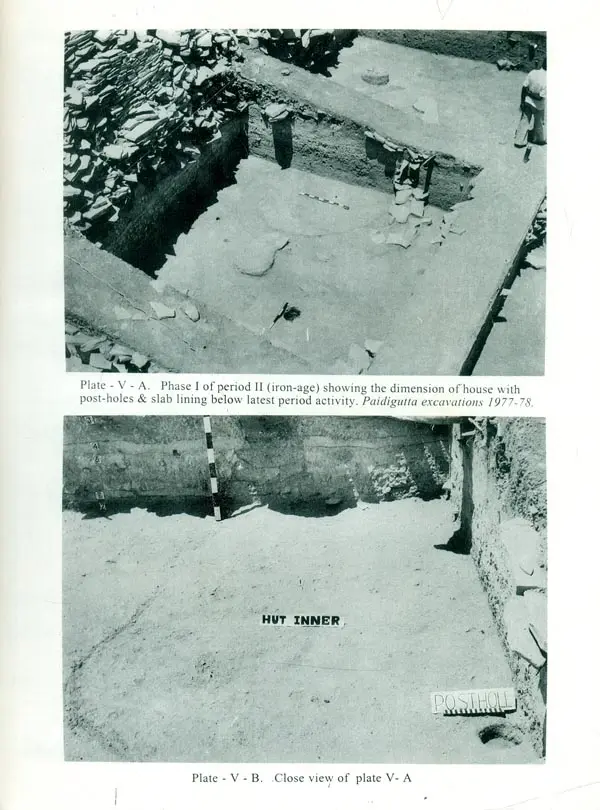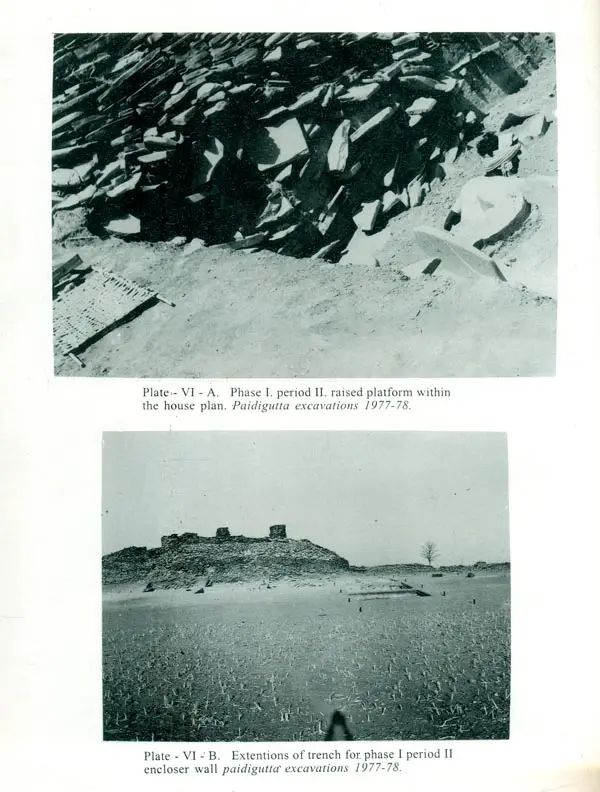
Paidigutta Excavations (An Old and Rare Book)
Book Specification
| Item Code: | UAF978 |
| Author: | D.L.N. Sastry |
| Publisher: | Publication Scheme, Jaipur |
| Language: | English |
| Edition: | 2000 |
| ISBN: | 8186782478 |
| Pages: | 220 (Throughout B/w Illustrations and 3 Maps) |
| Cover: | HARDCOVER |
| Other Details | 11.00 X 9.00 inch |
| Weight | 950 gm |
Book Description
Certain regions adjoining the lower reaches of the same valley were subjected to submersion due to the construction of Hydel Project at Srisailam, across the river Krishna In' recent times. To salvage the cultural data and in view of the limited time, several insritunons. Archaeological Survey of India, State Department of Archaeology and Museums, Hyderabad, Birla Research and Training Institute, Hyderabad. and Nagarjuna University took up the survey in early seventies and conducted excavations at selected sites. At Veerapuram, a site just downstream' of the confluence but on the right bank of the Krishna, Bhirla Institute exposed cultural sequence belonging to the Neolithic, Neolithic- Chalcolithic. Iron-age and early historic periods. The State Department of Archaeology. and Museums, Andhra . Pradesh, Hyderabad.
Conducted excavation at Chnamarur and Pedamarur sites a Little downstream of" the confluence both on the left: bank of Krishna and brought to light Neolithic-Chalcolithic and early historic' period data. The department' also excavated at Gondi mall, Uppalapadu, Chagature, Paidiguna all located in the region bounded by both the rivers and just before the confluence -point and brought or light data belonging to the different types of burials of the Iron' - age period.
The excavations at the Proto-Historic site, Paidigutta, were taken up to trace the cultural sequence belonging to the Neolithic-Chalchalithic, Megalithic and early historic periods and to find Its relation with the one found in its middle reaches and the nearby sites just away from the confluence. Though early historic period data is not found at Paidiguna, that data is found at Chagaturu, a site 'developed as an independent site but few meters away from Paidigutta.
He joined the Department of Archaeology and Museum in the year 1970 as Technical Assistant and worked at Hyderabad, Vijayawada mud Warangal .. During this period. he surveyed' and located various archaeological sites in the three main regions of Andhra Pradesh and took part in major excavations conducted by the Department at a number of sites such as Gajulabanda, Chandavaram, Rajahmundry, Korilingala, Keesarigutta, Chagaturu and Paidigutta. He also explored several Neolithic and Chalcolithic sites in Kurnool, Cuddapah, Mehabubnagar and Prakasam Districts as a part of his research work on the topic "Blace-Painted red ware in the late Neolithic or Neolithic -Chalcolithic level".
He was promoted in the year 1981 and in that capacity he worked at Tirupari, Vijayawada, Warangal and Hyderabad holding the posts of Assistant Director Excavations and Assistant Director Regional He conducted major excavations at Buddhist Settlement, Nelakondapalli in Khammam District. He surveyed the Manjera basin in Medak District and explored several archaeological sites.
At present, he is working as Assistant Director, Srisailm Project. At Somasila Village, he conducted the reconstruction work of 14 temples (datable from 14th CAD to l Seth CAD ) salvaged from the submergence area of Srisailam Hydel Project in Andhra Pradesh during 1987-89 and he is attending. to the reconstruction work of Ramateerham group of temples in the submersible area.
He published a book titled "Prehistoric Culture of the Manjra Valley in 1997." A guide book on the pre-historic gallery in Srisailam Pavilion building is on computer print. Now he is attending to the excavation report on the early historic site at Nelakondapalli.
By universal consent, what we call civilization is the process of control over nature and utilizes such force for better comforts. of human life. One of such processes is the construction of a dam and harnessing the water in the reservoir to irrigate lands for agricultural purposes. The water in such a reservoir is also utilized for the production of hydro-electricity. These two by-products, I should say, have been benefactors to human beings across the world. However, it is quite proper that since there is a beginning there must also be an end. As the coin have two sides, well. should necessarily have evil as well. Huge verdant lands are submerged into the water perhaps never 'or be seen again. The Srisailam Project is such a one which has submerged huge lands.
It is so good of the author to undertake such a valuable study on the cultural significance belonging to the heolothic-chalcolithic, megalithic and early historic periods at Padigutta submerged areas and to find its relations with the upper or middle reaches of the river. But for his work we may never have known the culture of that .wile lived in these areas. This book, thus, should surely be an invaluable source material of the past culture and be useful to research scholars in particular and to provide a good reading material to the general public.
So, I have a wholesome reason to thank the author for having approached me to write a foreword to this book. I know my period of Directorship of Archaeology & Museum of which I am only in additional charge will come to an end very soon. I also know that such a rare opportunity would never come again. And SQ this foreword which I have penned on this invaluable book will continue to adorn and he read by many, long after I have gone. I could not have wished for more than this.
While excavating Chagaturu, an early historic mound during 1977-78 the author explored the nearby areas and found Paidigutta, a site of Proto-historic significance from the research point of view. During 1978-79, with the consent of the department, the author could probe the mound as a research project and discovered both the Neolithic-Chalcolithic and Iron- age evidences.
The aim behind is as follows.
As a rescue oriented operation.
As a follow up of the investigations of M.S.Naga Raja Rao in the Tungabhadra valley.
To bring to light the significance of the mound in the plains by the streams and in close proximity of the low hills with Pre-historic data and with varied and innumerable burials of the Iron-age.
To trace the stratigraphical position of the pottery and other finds on the surface.
And to locate the black painted red ware which has a localized distribution in .. Kurnool, Cuddapah and Mehaboobnzgar districts do Andhra Pradesh (south of Krishna).
Iron-age in the south is traced at Tekwada burial site in Maharashtra. To the south of Maharashtra, in Karnataka, settlements of the early Iron-age are tapped in a limited way.
Dharanikota in Andhra Pradesh provided tangible evidence of the early Iron age occupation.
Unlike the other sites in the south where the occupational deposits are only a meter thick, the present site offers 1.15mt. thick deposit in addition to the stone structures raises over 4 meters above the surface. In this connection the present probe at Paidigutta, which is close to Karnataka region provides a link with similar sites in Karnataka and may yield more data about the early iron-age in Andhra.
Though the writing of the report was completed in 1981 itself, due to unavoidable circumstances, the publication got delayed. In this connection, I am deeply indebted to former Director Dr. V. V. Krishna Sastry for his consideration and encouragement for permitting me to take up the work. I am also obliged to N. R V. Prasad former Director for giving me a free hand and asking me to take up the writing work. I owe a debt of gratitude to Dr. B. R Subramanian, Professor, Ancient History and Archaeology, Nagarjuna University for his constant guidance in this field work. I am obliged to Dr.Laal Rosham, the present, Director, Department of Archaeology and Museums for kindly permitting me to publish the report. I thank my colleagues Mr. Y. Shambhu Singh, Mr. Md. Husain (draftsmen); Mr. Sainath, Mr. Devendra Raj and Mr. Narasimha Rao (Photographers) for their assistance. My special respects are to Sri Ch. Venkata reddy for his scholarly assistance. My special thanks are to my wife Smt. D. V. Ramana for her patient assistance in the classification of material. I thank my daughter, Dr.D A Padmavathi for ,taking up typing work .In the end I sincerely thank Dr. N. S. R Murthy and Smt. Indumati for the proof reading.
Previously excavations were conducted in the Krishna-Tungabhadra valley at Pikilihal (F. R. All chin, 1960), Tekkalakota (M. S. Nagaraja Rao and K. C. Malhotra, 1965), Sanganakallu O. D. Ansari and M. S. Nagaraja Rao, 1969) and Hallur (M. S. Nagaraja Rao, 1971) where they discovered different cultural phases of the Proto-historic period (Figs 1, 2). In recent years several institutions viz., State Department of Archaeology and Museums, Government of Andhra Pradesh, Nagarjuna University, Guntur, Birla Archaeological and Cultural Research Institute, Hyderabad and Archaeological Survey of India have extensively surveyed this area and located several sites of the Proto-historic times. Just before the confluence, on the left bank of river Krishna, three Neolithic-Chalcolithic and Megalithic sites viz., Chinamarur, Pedamarur and Lingampalli were found. While on the right bank of Krishna which also forms the left bank of Tungabhadra, Megalithic sites viz., Uppalapadu, Chagaturu and Paidigutta, a Megalithic and Neolithic-Chalcolithic site were located. Again, in the same area on the right bank of Tungabhadra, a Megalithic site at Satanikota was found. A few kilometers downstream on the right bank of Krishna another Proto-historic site by name Veerapuram exhibiting continuous cultural sequences right from the Neolithic-Chalcolithic to the Early historic period was found.
The excavation work at Paidigurta was taken up, with a view to tracing out further details of the iron using people, and their contemporaneity, if any, with the Neolithic-Chalcolithic people in the valley. It is also aimed to find the stratigraphical position of the black painted red- ware in the Neolithic context.
Book's Contents and Sample Pages
